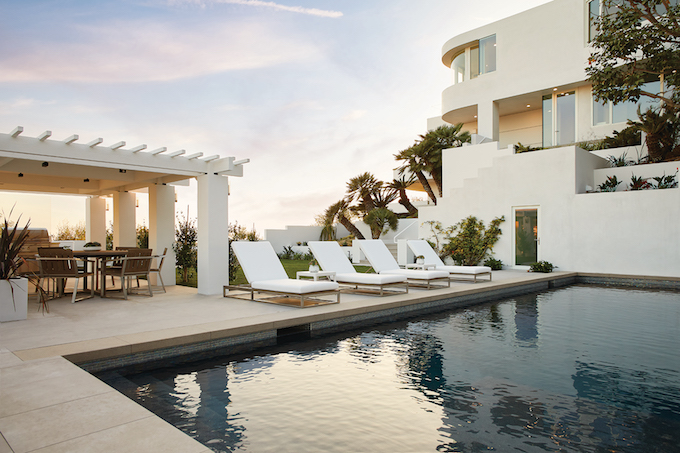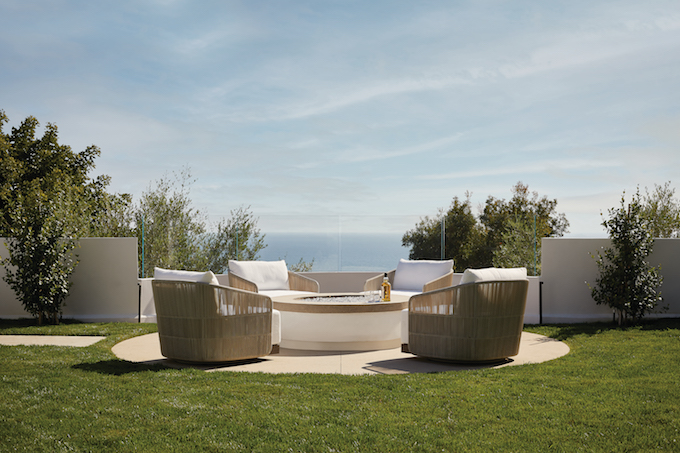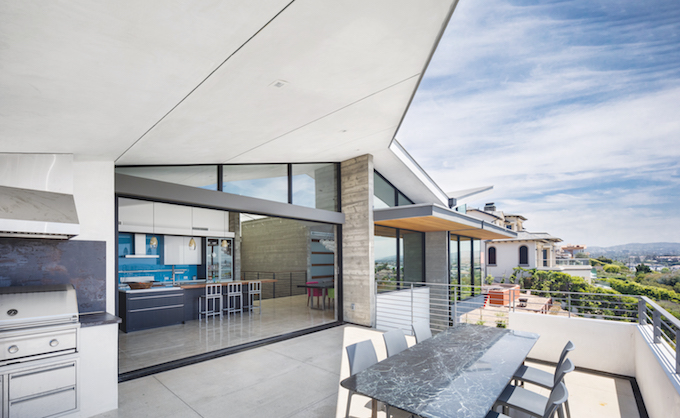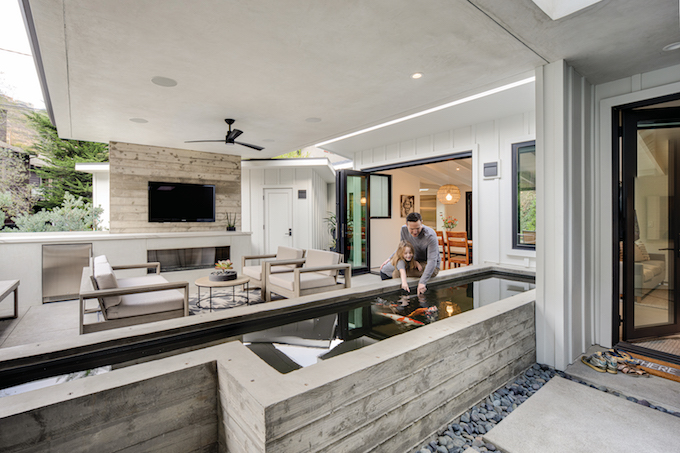
This post was originally published on this site
From avant-garde grills to all-weather materials, outdoor kitchens and dining spaces serve as a natural extension of one’s home.
By Ashley Probst
The picturesque summer evening consists of balmy weather and an outdoor gathering with lots of laughter, crisp drinks and barbecued fare shared with loved ones. Combine this with the breathtaking views from Laguna Beach dwellings and it’s no wonder homeowners are being drawn outside. One essential for alfresco living is an outdoor kitchen and dining area.
“Outdoor dining and outdoor cooking are such a key part of Southern California life,” says Lisa McDennon, founder of Lisa McDennon Design. “… [Additionally,] I think we all understand how the pandemic has increased our need for outdoor entertaining, allowing us to safely gather.”
Even before COVID-19 emerged, the demand for outdoor kitchens was already rising, McDennon says. Perhaps these spaces are so popular because they serve as an extension of the home and provide an enchanting epicurean experience.

Designing a Dream Kitchen
Without question, California is blessed with enviable weather, which makes outdoor cooking and dining a possibility throughout the year—and almost inevitable during the warmer seasons.
“In Southern California, you live and most of your entertaining areas are outside,” says Payton Addison, owner and principal designer of Payton Addison Interior Design. “… All of our houses that we’re doing are indoor-outdoor living and so part of that extension of outdoor living is creating a bar area, a kitchen area [and] a cooking area.”

By creating an open-air space to allow for entertaining, designers can make any size home feel more spacious, open and inviting. “It really allows those of us that have smaller kitchens or traditional beach cottages that have limited interior space to spread out, … accommodate larger events and break up the cooking areas,” McDennon says.
This also allows for communion with the surrounding natural beauty, such as views of the ocean, hillside or even a garden right on the property.
“It’s kind of like camping, right?” says Anders Lasater, president and CEO of Anders Lasater Architects. “We’re going to go and have an experience that’s uncluttered by all of the things that weigh you down every day when you’re inside.”

But there is one aspect of an indoor kitchen that lends itself well to outdoor spaces: Having overhead coverings like umbrellas or even a roof and walls with expansive windows and doors that open up to create an indoor-outdoor concept. This offers protection from the elements for the spaces themselves as well as the people enjoying them.
Regardless of the design details, Lasater always aims for sustainability. “I want to try to find a timeless, essential quality to that design so that in 10, 15, 25 years, it doesn’t feel like it needs to be redone because it is outdated,” he says. “… [Architecture] deserves to be a lasting design and not one that is bound to the taste of current trends.”
Part of that process is curating the right selection of products and materials. Some of the more durable options that McDennon recommends include marine-grade wood, fade-resistant fabrics as well as tile, stone and porcelain surfaces.

“I think three things are important: Make sure to choose a countertop material that can withstand the elements,” McDennon says. “… Also remember to provide good lighting for ambiance, as many meals are enjoyed after the sunset. Lastly, provide heaters or a fireplace to keep your guest[s] cozy while enjoying your company and your amazing feast.”
Alfresco Appliances
No feast can be prepared without the proper utensils, so appliances also play an important role. Gone are the days of a haphazardly placed barbecue in the corner of one’s backyard—replaced by thoughtfully curated spaces fully stocked with high-quality products.
“One of the serious changes that we’ve seen in the last 10 years is the availability of quality outdoor kitchen equipment,” Lasater says, pointing to the likes of barbecues, stoves, hoods, cooktops, outdoor cabinets and other elements that support how homeowners entertain. “[This has] allowed us, as architects and designers, to create a kitchen that’s really a viable duplicate of what’s inside the house.”

McDennon highlights additional appliances such as refrigerators for beverages, ice machines, sinks, pizza ovens and, for the “serious barbecuers,” a smoker.
“Having an outdoor kitchen is great, too, because there are amenities at your fingertips,” McDennon says. “… If you have room to design additional cabinetry outside, it’s wonderful to add a built-in bar, which can also double as [a] serving countertop.”
McDennon recommends Hestan’s colorful appliances, Orange County-based Moya Living for powder-coated steel cabinetry, as well as Janus et Cie, Harbour Outdoor and Brown Jordan (which has a store at South Coast Collection in Costa Mesa) for outdoor furniture. Addison also sources furniture from Brown Jordan as well as RH (formerly Restoration Hardware) in addition to barbecues from Lynx and Pirch, which has a Costa Mesa showroom.

Another necessity is a fire element, such as a fire pit and outdoor heaters. “A lot of our clients really want that ability to stay warm, but be outside, and one way to do that is to have built-in heaters in the ceiling of their outdoor space,” Lasater says.
But when it comes to fire, the main attraction will always be the barbecue, oven or any other cooking mechanism in an outdoor kitchen, as that is where people will intuitively gather and spend time.
“We, as humans, have strongly connected the act of cooking with the act of eating and it really brings us back to our caveman days to be outside, cooking in the open, eating in the open and having that kind of communion with our ancient past,” Lasater explains.
